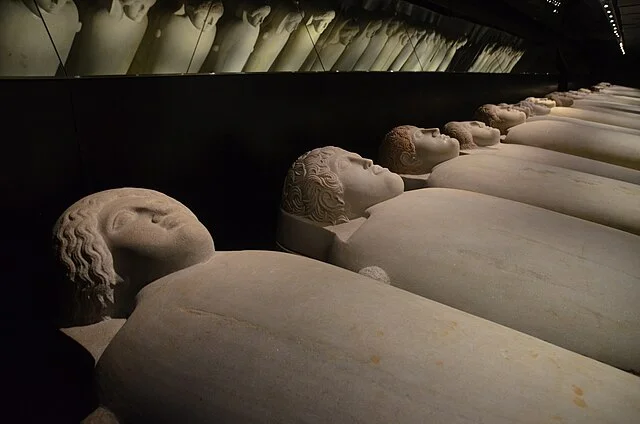The Ford Collection sarcophagi, housed in the Ford Museum, stand out as significant artifacts of ancient funerary practices. These intricately designed sarcophagi, dating primarily to the Roman period, offer critical insights into the cultural, religious, and social dimensions of the ancient Mediterranean world. Collectively, they highlight the diversity of artistic traditions and funerary customs across several regions and centuries.
Get your dose of History via Email
Background and Discovery
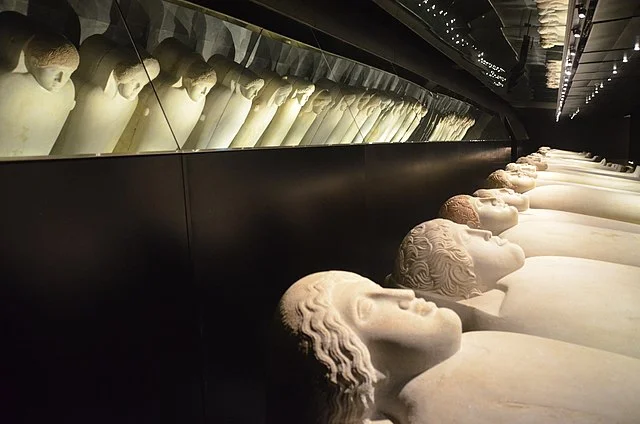
The Ford Collection includes sarcophagi from various parts of the Roman Empire, notably from regions within Italy, North Africa, and the Eastern Mediterranean. Many pieces were uncovered during early 20th-century excavations, driven by an increasing interest in archaeology and the preservation of ancient artifacts. These sarcophagi were later brought together through acquisitions by the Ford family, who aimed to create a collection representing different stylistic and cultural approaches to funerary art.
Most sarcophagi in the collection date from the 2nd to 4th centuries AD, a period when sarcophagus production and trade reached its peak in the Roman world. The use of stone, primarily marble, was common in these works. Artisans carved detailed scenes that often depicted mythological, religious, or symbolic elements.
Cultural and Artistic Significance
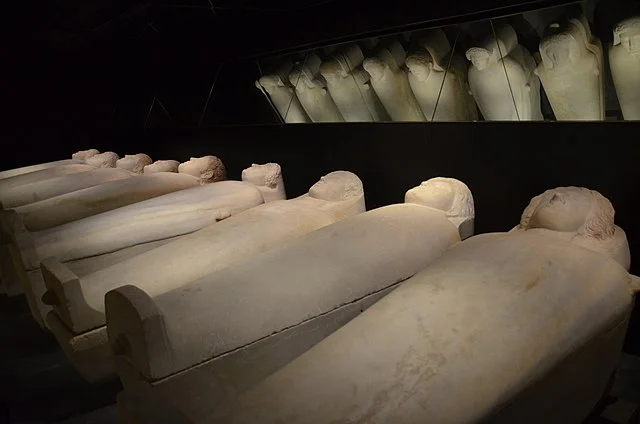
The Ford Collection sarcophagi illustrate a range of styles and iconography. Roman sarcophagi often featured relief sculptures that covered one or more sides of the stone container. These designs varied widely depending on the patron’s wealth, beliefs, and geographic location.
One common theme in these sarcophagi is mythological scenes. Depictions of gods, heroes, and legendary figures represented both religious beliefs and philosophical ideals popular among the Roman elite. Scenes from Greek mythology, such as the stories of Dionysus, Hercules, or the Trojan War, appear frequently. These depictions allowed patrons to align themselves with the virtues, courage, or divine favor embodied by these figures.
In addition to mythological scenes, many sarcophagi in the Ford Collection display motifs reflecting the hope for an afterlife. For example, motifs of grapevines and the god Dionysus suggest a connection with eternal life and rebirth, themes resonant within both pagan and early Christian communities. By choosing such themes, patrons used funerary art to convey beliefs about life after death.
Regional Variations
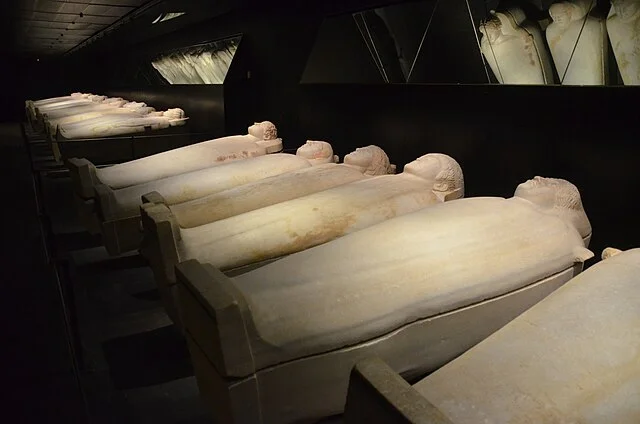
The Ford Collection sarcophagi highlight significant regional differences in style and iconography. Italian sarcophagi, generally produced in Rome, often featured elaborate carvings and deeply sculpted figures. These Roman works leaned toward narrative storytelling, with scenes unfolding across the length of the sarcophagus.
North African sarcophagi in the collection exhibit distinct features as well. Produced primarily in Carthage and other African cities, these pieces often include simpler carvings with symbolic motifs, such as peacocks or rosettes. This approach reflects a regional style that focused more on symbolism than detailed narrative scenes.
In the Eastern Mediterranean, particularly in Asia Minor, the sarcophagi show influences from Greek art. These pieces commonly feature architectural elements, such as columns or pediments, and a preference for shallow relief. The Ford Collection includes several examples of these Hellenistic-influenced sarcophagi, underscoring the artistic exchange between Greek and Roman traditions in the Eastern Mediterranean.
Religious Transformations and Early Christian Influence
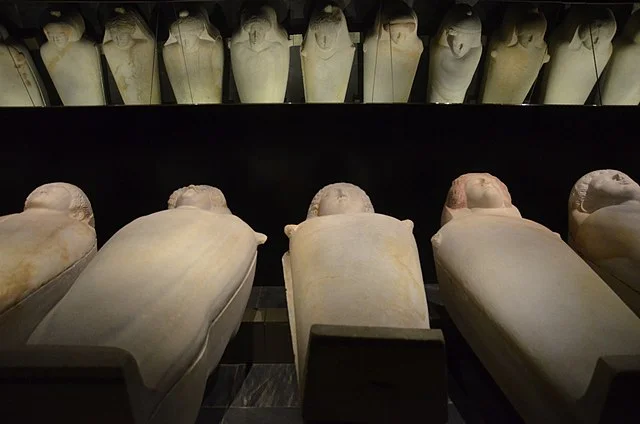
The Ford Collection sarcophagi also document the gradual shift in religious practices during the late Roman Empire. As Christianity spread, especially from the 3rd century AD onward, sarcophagus iconography began to reflect Christian themes and symbols. The collection includes some early Christian sarcophagi that show biblical scenes, such as the story of Jonah or the Good Shepherd, as well as symbolic motifs like the chi-rho or doves.
These Christian-themed sarcophagi differ from earlier pagan pieces in their focus on salvation and resurrection. While earlier sarcophagi often depicted mythological scenes with pagan gods, Christian sarcophagi used images and symbols intended to convey faith in the resurrection and eternal life promised by Christian doctrine. This change in iconography highlights the broader transformation within Roman society as Christianity gained official recognition and then dominance.
Preservation and Modern Significance
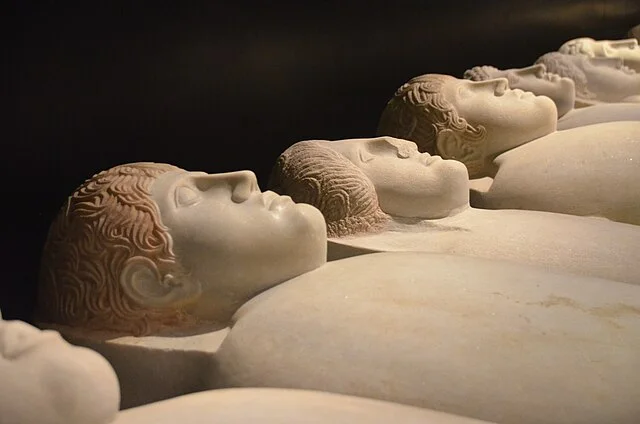
The Ford Collection’s preservation efforts ensure that these sarcophagi remain valuable resources for studying ancient funerary practices. Conservators maintain the structural integrity and aesthetic quality of each piece while protecting the carvings from deterioration. Advanced imaging and analytical techniques further assist researchers in understanding the artistic methods, materials, and cultural influences involved in their creation.
In recent decades, the Ford Collection sarcophagi have also become focal points for public education and historical scholarship. Exhibitions and educational programs enable audiences to explore the complexities of ancient Roman beliefs and artistry. By examining these sarcophagi, modern audiences gain insight into the ways ancient societies commemorated death, expressed personal or familial identities, and navigated the cultural shifts of their time.
Conclusion
The Ford Collection sarcophagi provide a detailed look into the artistic, cultural, and religious practices of the Roman Empire. Through these beautifully crafted artifacts, we gain a deeper understanding of how ancient people viewed life, death, and the afterlife. By preserving and studying these sarcophagi, historians and archaeologists can continue to explore the complexities of Roman society and the enduring influence of its funerary art.
Source:

